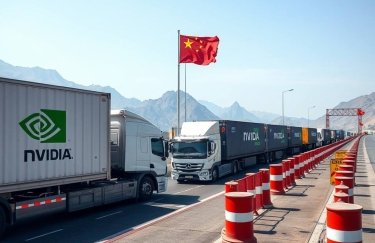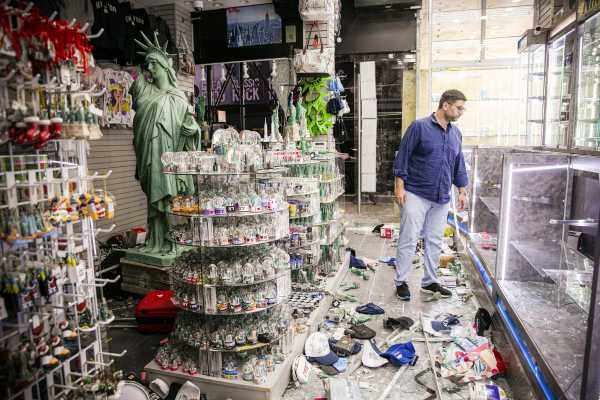
There isn’t a simple story about looting
“The question you have to ask yourself is: Why are there so many people in our society who don’t have a lot to lose?” says sociologist Darnell Hunt.
By
Terry Nguyen
Jun 2, 2020, 1:40pm EDT
Share this story
-
Share this on Facebook
-
Share this on Twitter
-
Share
All sharing options
Share
All sharing options for:
There isn’t a simple story about looting
-
Reddit
-
Pocket
-
Flipboard
-
Email
This story is part of a group of stories called
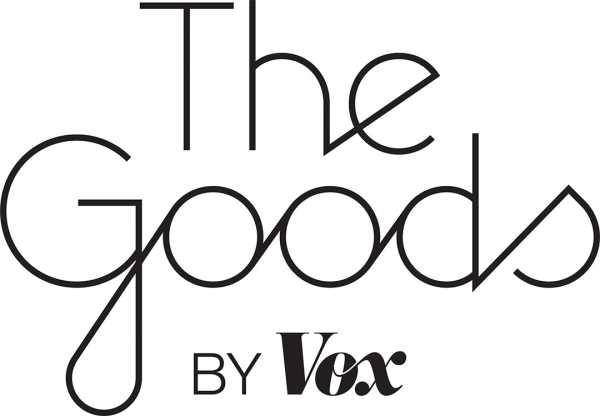
On May 27, the second day of protests over police brutality and the killing of George Floyd, a video of people looting a Target in Floyd’s home city of Minneapolis swiftly went viral. The images of haphazardly cleared aisles, broken windows, and citizens seemingly walking off with merchandise became the focus of how the protests “turned violent,” and the actions were broadly condemned by politicians, law enforcement, and others who have urged for these demonstrations to remain peaceful.
The ransacked Target provoked a strong reaction among observers across the country, who interpreted the act in many ways: as a demonstration of anti-capitalist intent, a sign of the protests’ lawless and disorderly nature, or an inevitable expression of rage and economic distress.
The scope and scale of the demonstrations against police brutality have grown and spread to more than 250 cities nationwide, and looting has often followed. From New York City to St. Paul to Chicago to Los Angeles, luxury storefronts, big-box retailers, and mom-and-pop shops have been looted or vandalized or experienced some form of property damage. Some in solidarity with the protesters have argued that these unlawful acts capture the outrage and chaos of the moment while fueling media attention toward the cause.
“Merchandise can be replaced. Black lives can not” is a phrase that has been frequently invoked on social media. Activists have started circulating a 2014 article titled “In Defense of Looting,” which was published in the midst of protests in Ferguson, Missouri. Amid the social turmoil, some people not affiliated with the protests have capitalized on the moment for their own benefit.
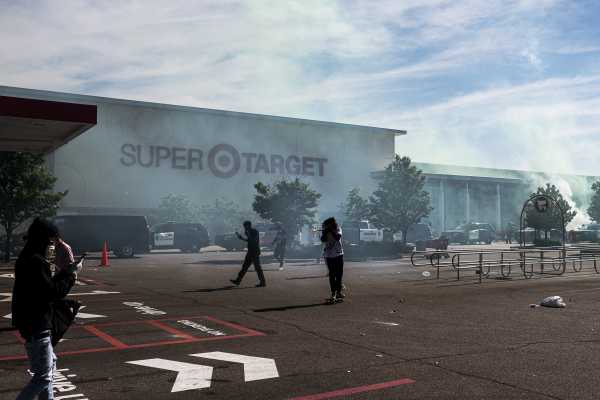
Civil disobedience is frenzied and chaotic by nature. People who take to the streets might not all share the same beliefs: Some protesters are looting out of the same anger that drives the protests, and other looters are not protesters at all. But because it’s impossible to untangle every person’s motivations and intent, it’s much easier to lump them all into a group to create a narrative of the event that fits our understanding.
To rein in the protesters, the National Guard has been deployed in more than 20 states. Cities are enforcing curfews that start as early as 6 pm and, in some cases, shutting down mass transit early. The president has threatened to send the US military to quash the protests, less than a week after he sent a tweet saying, “Any difficulty and we will assume control but, when the looting starts, the shooting starts.”
Many rallies are publicized as peaceful events, although tensions between police officers and protesters are on a short fuse. The imaginary line between peace and chaos can be easily crossed — by just a handful of civilians or law enforcement. Many activists and protesters have actively warned against looting, vandalism, and violence on social media and at events. In some cases, captured footage has shown police officers escalating events by using pepper spray, tear gas, and rubber bullets on bystanders indiscriminately.
There is currently an overwhelming sense of unrest across America, preceded by months of staying indoors to try to curb the coronavirus pandemic. The protests, property destruction, and disregard for authority are only a symptom of our current situation, according to Darnell Hunt, the dean of social sciences at UCLA, who has done extensive research into the 1992 uprisings in Los Angeles following the acquittal of the police officers who beat Rodney King. I spoke to Hunt about the many narratives that emerge during a period of massive urban unrest, particularly the focus on theft and property damage, in an attempt to make sense of the social chaos around us.
How does the conversation move from the protests to looting so quickly, and does this lead actions like looting to overshadow the goal of the protests?
What you tend to see in media narratives is a focus on the immediate, the breaking news element of a story. So, of course, when violence breaks out, that becomes the lead. Looting becomes the focus. What tends to happen in the evolution of news coverage of urban unrest is an ever-deeper focus on the particulars of protesters and what they’re doing, which all too often speaks about protesters in monolithic terms and fails to distinguish between those who are possibly peaceful protesters and others who may be participating in other activities for other reasons.
One of the things I learned from my research in the 1992 LA uprisings is that people took to the streets for a variety of reasons. The Rodney King verdict was just a trigger that created a moment for people to sort of put on the agenda any number of critiques of the system. Questions of failures of the criminal justice system. Rampant inequality in society. Right now, we’re caught in an unprecedented moment where you have a once-in-a-century pandemic combined with the biggest urban unrest we’ve seen probably since the late 1960s.
“You have a once-in-a-century pandemic combined with the biggest urban unrest we’ve seen probably since the late 1960s”
When does that ever happen? And they’re not disconnected. I think the strains of the pandemic, the fact we have 40 million unemployed Americans, people without access to health care, people who have been shut in for months, people who don’t know where the next paycheck is going to come from, and not just African Americans but affecting people from across all racial groups.
If you look at the video coverage of what’s happening across the country, this is a multiethnic, multicultural protest in many ways, again, triggered by a specific instance of police brutality, but an instance that was the bookend to other cases of police brutality in the last few weeks and months, going back to Ahmaud Arbery in Atlanta to Breonna Taylor in Louisville. That’s just the tip of the iceberg. There’s more beneath the surface of the water prompting people to risk their lives, quite literally, in the midst of a pandemic and to protest without proper social distancing, in some cases without a mask, because they’ve been driven to the edge.
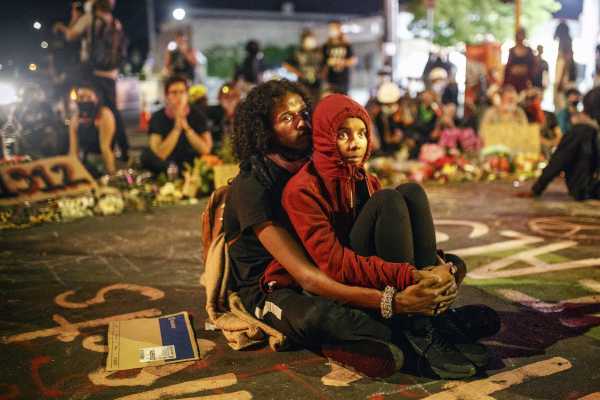
You don’t get that type of framing in mainstream news narratives. It tends to quickly descend to the law-and-order frame, when there’s the first case of fire or looting. It then becomes about property values and then you get the inevitable question of why people are destroying their own communities. All of that moves the discussion in the direction away from the underlying causes of what’s happening. We get hung up on the symptoms and miss the causes altogether.
It seems like there are two narratives emerging around looting: one of the “outside agitators,” that those not affiliated with the protests are coming in to cause chaos, and the other in which looting is actually a political expression. What do you make of those arguments?
What’s interesting about the claim of “outside agitators” is that it’s exactly the type of argument that racist Southerners used during the civil rights movement to criticize protests and movements there. They were saying it was the Northerners who came there to mess up their way of life.
In some way, it doesn’t matter where the people are coming from or why they’re doing it. The fact is a moment was created that could be exploited by people, no matter where they’re coming from. That is what’s more important. Why is it that we got to the point that agitators from other communities could come in and “agitate”? That’s the point. What created this moment and how are you going to deal with that?
Clearly, there are people there who are protesting peacefully and are legitimately moved with their lives to do this. That should still be the focus. These narratives have been used before in attempts to minimize the legitimacy or the political value of what the people who originally took to the streets are attempting to highlight.
People generally seem to have a very visceral reaction to damaged property and any sort of protester-incited violence or destruction. Why is that, and is that changing?
It’s pragmatic. No one wants to see their own property damaged. If you are a business owner, who puts your entire livelihood into a business, you probably don’t want it to be the sacrificial lamb of a movement.
One evening when I was going out, researching for my book on the 1992 LA uprisings, I ended up in this South LA shopping center where there were a couple businesses burning. There was this older black man standing. He was watching everything unfold and told me, “See that over there; that’s my record store.” He said he would give it all up to see something positive come out of this.
“The question you have to ask yourself is: Why are there so many people in our society who don’t have a lot to lose?”
In other words, he meant that things have to burn to get attention, to get people to realize that there’s something fundamentally wrong with the system. Yes, he might be a victim of the looting because his shop was burning, but he was willing to make that sacrifice to hope that the movement would advance in a positive direction. Not everyone might feel that way, but there are some people who do.
Like any group, you’re going to see a variety of opinions within the black community, just like any other community, on what the proper way to protest is. The civil rights movement was built on the philosophy of nonviolent protest, but others in the black community who argued against that wanted a more militant approach, like the Black Power approach. Some people would argue that nonviolent protest will only get you so far, and the threat of other activities might push you over the finish line. History is a mixed bag when it comes to that.
You’ve previously mentioned how protesters nationwide appear to be selective with their location and, in some cases, which places get looted. There’s been a lot of footage showing how chain stores like Target or CVS have been looted and higher-end retailers boarding up their windows. How is that different from previous periods of social unrest?
In the 1960s, a lot of protest activity was centered in the inner-city communities. There was a long period after those events where the residents of those communities suffered because they didn’t have access to certain resources. Grocery stores stopped locating in those communities, banks went away, and people lost out on services you had before because they were burned to the ground or looted and destroyed.
What’s interesting about this moment is that a lot of activities are not the inner-city communities but in more affluent areas. Here in Los Angeles, it’s in Santa Monica and Melrose. I haven’t heard of events in South LA, where people organized in 1992 and other periods. It begs the question of symbolism, of where people decide to go and who decides to participate in those areas. It makes it somewhat different than what we’ve seen in prior instances of urban unrest — where people took to the streets wherever they happened to be and those areas became the victims of burning and looting. That doesn’t appear to be necessarily the way things are unfolding now. People appear to be more intentional and actions appear to be more political.
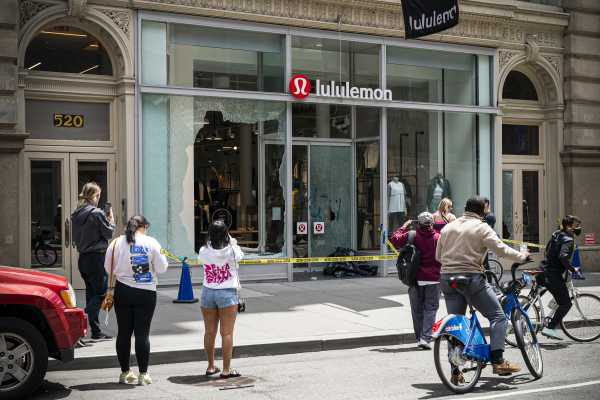
Just as we saw in 1992, from footage I’ve seen on CNN and social media, you see a lot of spray-paint saying that this is a minority-owned or black-owned business. In other words, these signs say, direct your anger toward the people who are oppressing you, not these small-business owners. In 1992, at least, that spared a lot of businesses. Protesters are not indiscriminately burning things. They seem to be more focused on chain stores, like Target, or specific cultural icons that represent a system people feel has not served them.
How does the social chaos that stems from a protest spread in a city, and how does that lead people who might not necessarily have the right political motivations in mind to start looting for their own personal gain?
In any instance of urban unrest, you’re going to see a range of different motivations, tactics, and approaches. Some people are going to do it by the book: strictly peaceful and law-abiding through nonviolent direct action. Then there’s the response from those who believe that confronting authority figures and the police by overturning police cars and vandalizing police stations are actions that have to be done to get the attention of the system.
You also have other people who aren’t necessarily proponents of either philosophy, who see the moment as an opportunity to get ahead for whatever reason. Typically, these people feel economically marginalized and don’t have a lot to lose. People with a lot to lose don’t do things like that. The question you have to ask yourself is: Why are there so many people in our society who don’t have a lot to lose? That’s the fundamental underlying question.
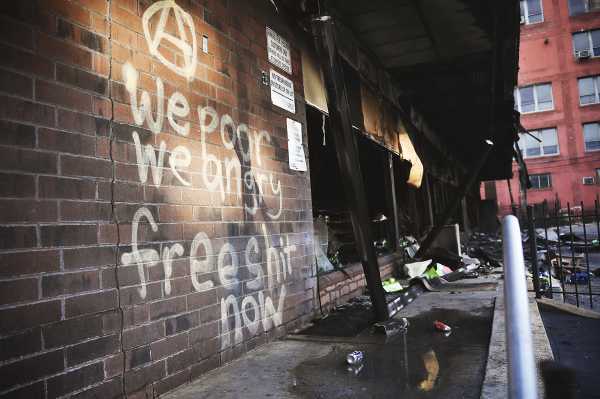
There are problems in our economy and problems in our social safety net right now. People don’t know when their next paycheck is coming. Things have been thrown into question recently. These instances show a breakdown of legitimacy. People are basically saying, the system is no longer legitimate. From the perspective of the authorities, people are breaking the law because the law no longer has legitimacy. They recognize the law doesn’t apply equally; some people have justice and some people don’t. The question is, how do you create a society where there’s less incentive for people to commit these acts because they have a basic modicum of dignity, a living wage, and things that make them feel secure in their being.
Support Vox’s explanatory journalism
Every day at Vox, we aim to answer your most important questions and provide you, and our audience around the world, with information that has the power to save lives. Our mission has never been more vital than it is in this moment: to empower you through understanding. Vox’s work is reaching more people than ever, but our distinctive brand of explanatory journalism takes resources — particularly during a pandemic and an economic downturn. Your financial contribution will not constitute a donation, but it will enable our staff to continue to offer free articles, videos, and podcasts at the quality and volume that this moment requires. Please consider making a contribution to Vox today.
Sourse: vox.com
